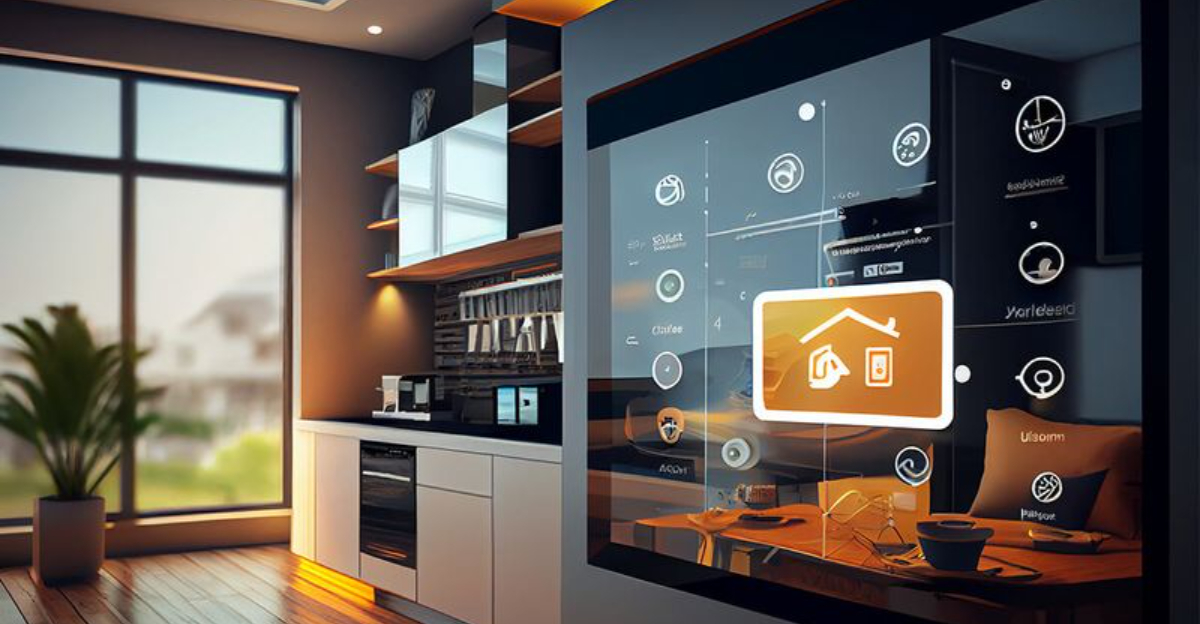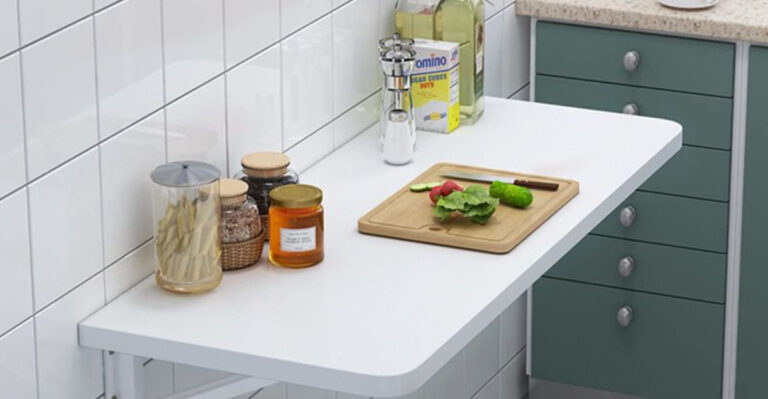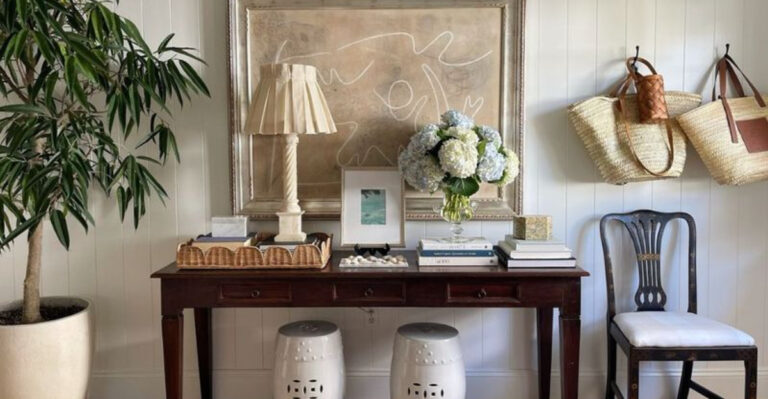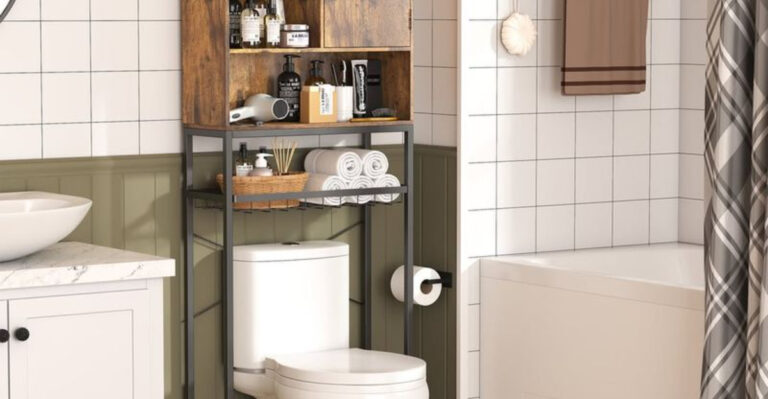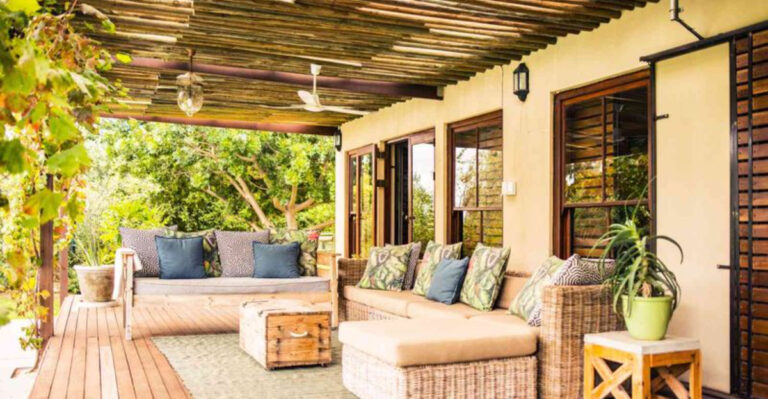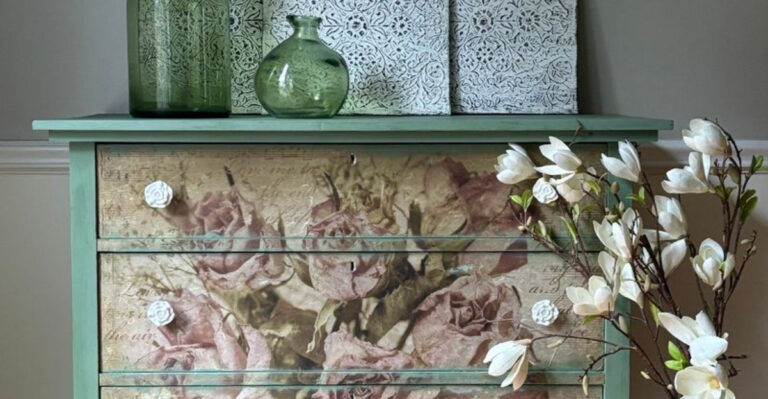10 American Home Styles That Will Blow Up 2030 (Plus 10 People Already Started Using)
Ever catch yourself daydreaming about what your perfect home might look like in a few years? I do it all the time. With technology moving at lightning speed and sustainability becoming a top priority, the homes we’re building now are so different from the ones we grew up in.
Smart features, clean lines, and thoughtful design choices are shaping what home even means. Some styles are already taking off while others are quietly gaining steam.
So here’s a peek into the future and see which home styles could be everywhere by the time 2030 rolls around.
1. Micro Mansions

Small but mighty, these compact luxury homes pack all the amenities of a mansion into spaces under 1,000 square feet. Smart storage solutions hide everything from workout equipment to office spaces.
The appeal? You get the luxury feel without the massive mortgage or maintenance headaches. Plus, cleaning takes minutes instead of hours!
Micro mansions often feature convertible spaces – your dining room becomes a dance floor, then transforms into a guest bedroom with the push of a button.
2. Bio-Integrated Homes
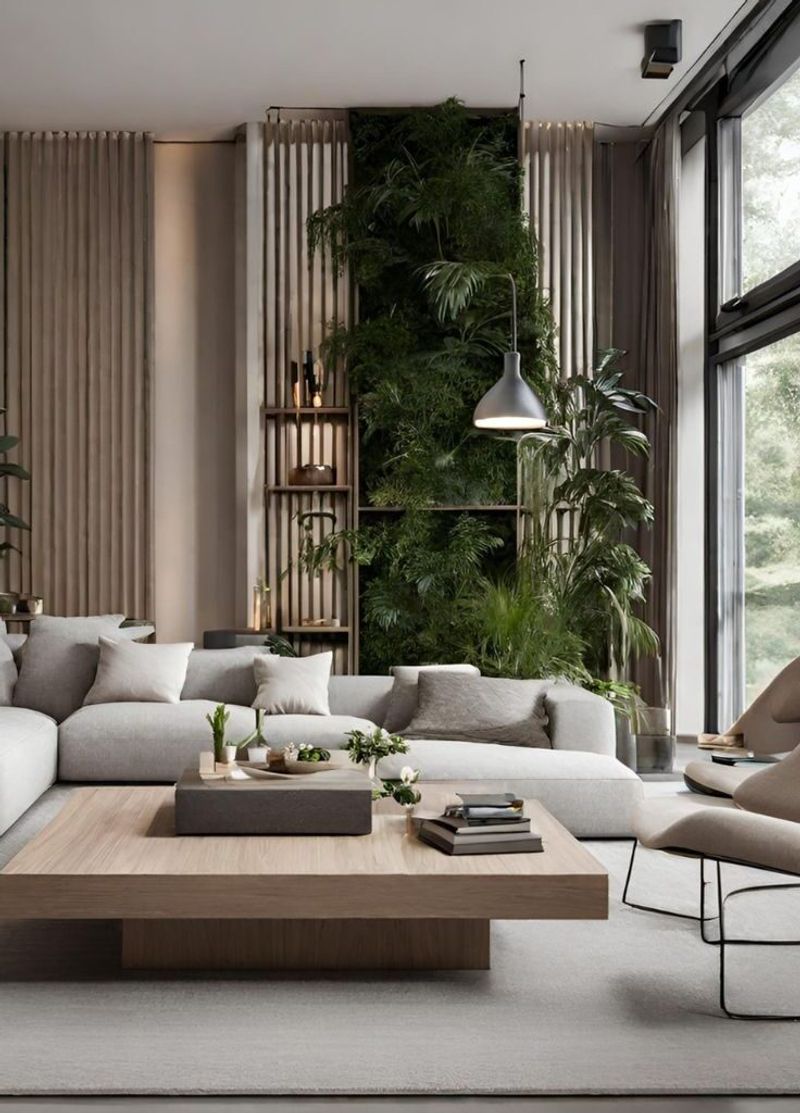
Living walls aren’t just decorative in these futuristic homes – they’re functional air purifiers and temperature regulators.
Imagine mushroom-based insulation growing within your walls and algae panels generating electricity while providing shade. Your house literally breathes and adapts to environmental conditions!
Scientists are developing building materials made from engineered bacteria that can heal themselves when damaged, making your home a living ecosystem that repairs itself over time.
3. Nomadic Pod Houses
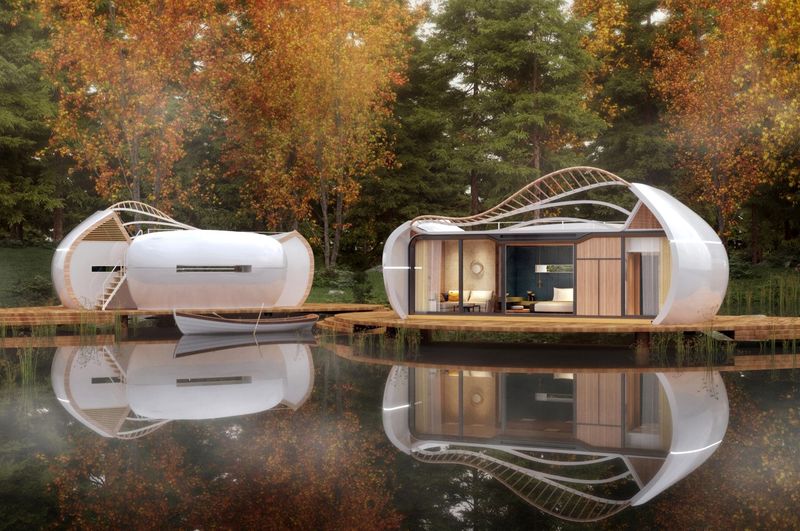
Forget stationary living! These modular homes attach to transportation platforms, allowing you to relocate without selling your house. Wake up in the mountains today, by the beach tomorrow.
Each pod contains essential living spaces that can be rearranged or swapped out as needs change. Growing family? Just add another bedroom pod!
Though mobile, these aren’t your grandpa’s RVs – they feature full-sized appliances, luxury finishes, and structural integrity comparable to traditional homes.
4. Invisible Tech Homes

Technology disappears into the background in these seamless designs. No visible screens, speakers, or gadgets – just surfaces that transform into whatever you need when you need it.
Walls double as display screens but look like normal walls when not in use. Kitchen counters recognize ingredients placed on them and project recipes directly onto the surface.
Voice commands and gesture controls eliminate the need for switches and remotes, creating clean, minimalist spaces where technology serves you without being seen.
5. Climate Adaptive Architecture

Homes that physically transform with the seasons are coming! Roofs that expand to collect more sunlight in winter and contract to provide shade in summer. Walls that thicken for insulation or thin for ventilation.
Some models feature automated window systems that adjust tinting throughout the day based on sun position and interior temperature needs.
Yards will contain microclimate zones – areas engineered to maintain specific conditions regardless of outside weather, allowing for year-round outdoor enjoyment.
6. Underground Luxury Homes
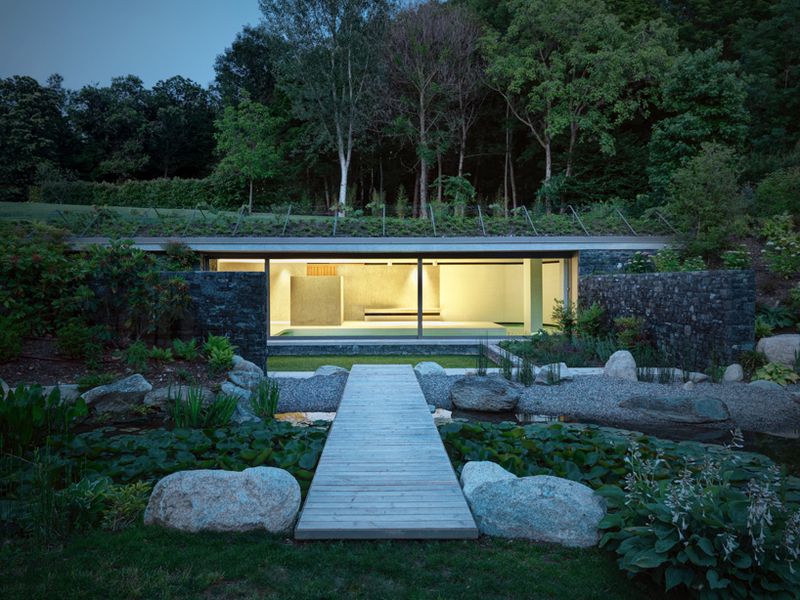
Going down instead of up is the new trend! These homes are partially or fully subterranean, offering natural insulation and protection from extreme weather events.
Light wells and advanced fiber optic systems bring natural sunlight deep below ground. Atriums create the feeling of outdoor spaces despite being underground.
If you’re worried about feeling closed in, don’t be! Modern designs feature virtual “sky ceilings” that perfectly mimic the appearance and light patterns of the actual sky above.
7. Aqua Homes
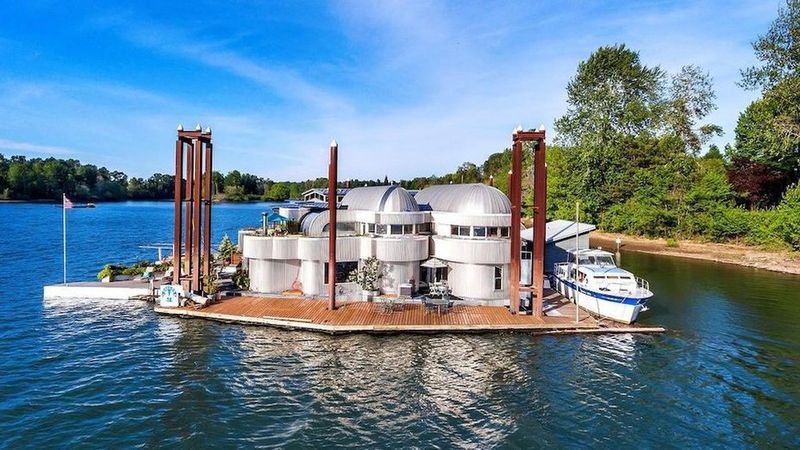
Water becomes a central architectural element in these innovative designs. Flowing water walls serve as room dividers while purifying air and regulating humidity.
Some feature indoor streams running through living spaces, creating natural cooling effects and soothing soundscapes. Fish ponds integrate with hydroponic systems that grow food for the household.
Glass floors reveal water reservoirs below that collect rainwater for household use while adding stunning visual elements to the home’s design.
8. Zero Waste Circular Homes
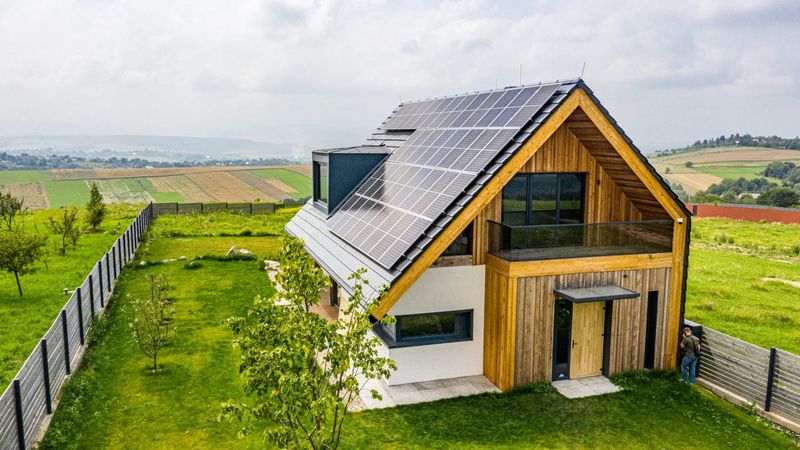
Nothing leaves these properties! All water, organic matter, and materials stay onsite in continuous loops of reuse. Kitchen scraps feed garden compost systems that grow food for the home.
Greywater from showers waters ornamental plants, which filter the water for toilet use. Even human waste gets processed in specialized systems that transform it into garden fertilizer.
Materials used in construction are selected for their ability to be completely recycled or composted when renovations occur, creating truly zero-waste living environments.
9. Multi-Generational Flex Homes
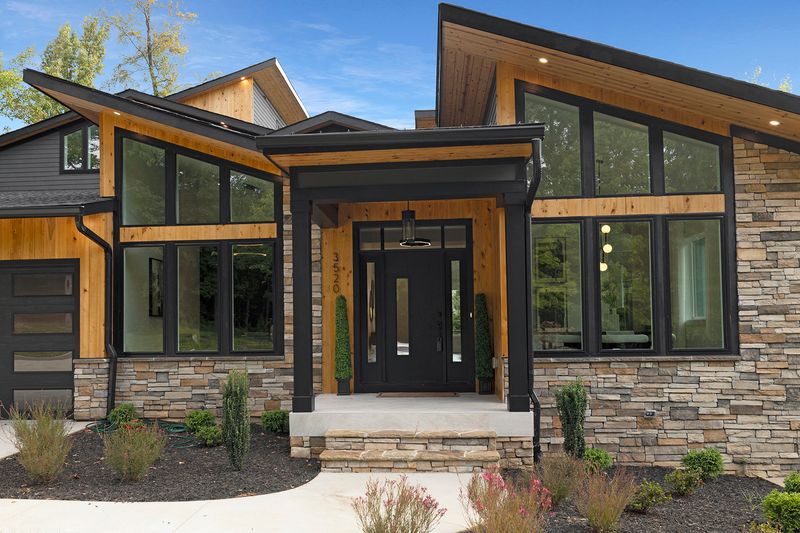
As families evolve, these homes adapt with movable walls and modular spaces that transform as needs change. Young couples can section off rental units, then reclaim the space when children arrive.
When parents age, the home reconfigures to provide accessible, private living quarters while maintaining family connections. Soundproofing technology allows for privacy despite proximity.
Common areas feature adjustable elements that work for toddlers through seniors, with surfaces and fixtures that change height and function with simple adjustments.
10. Disaster-Proof Residences
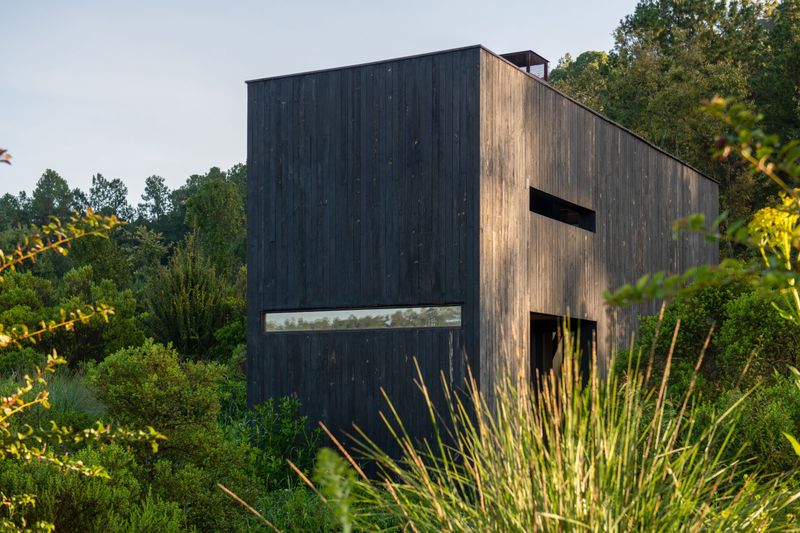
With extreme weather becoming more common, homes designed to withstand anything are gaining popularity. These fortresses feature retractable storm shutters that deploy automatically when high winds are detected.
Foundations use floating technologies that rise with floodwaters instead of being damaged by them. Some models include built-in firefighting systems that protect the structure during wildfires.
Power systems combine solar, wind, and geothermal sources with massive battery storage, ensuring these homes remain functional even when the grid fails for extended periods.
11. Mid-Century Modern
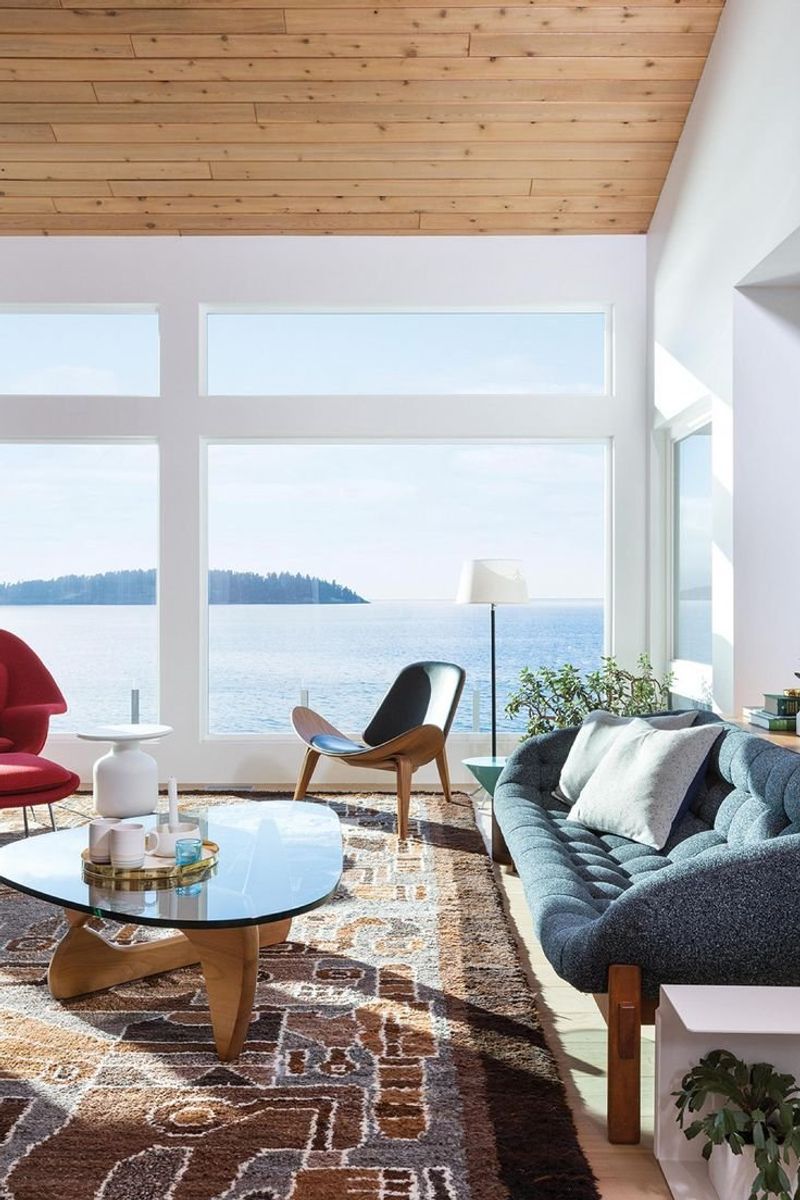
Clean lines and large windows define this timeless style from the 1940s-70s. Flat planes, large glass windows, and open spaces create a feeling of bringing the outdoors in.
Natural materials like wood, stone, and leather mix with manufactured elements like plastic, plywood, and fiberglass in surprising combinations. The style celebrates function without sacrificing beauty.
While originating decades ago, this style remains incredibly popular for its simplicity and connection to nature, especially among younger homebuyers seeking authenticity in design.
12. Modern Farmhouse
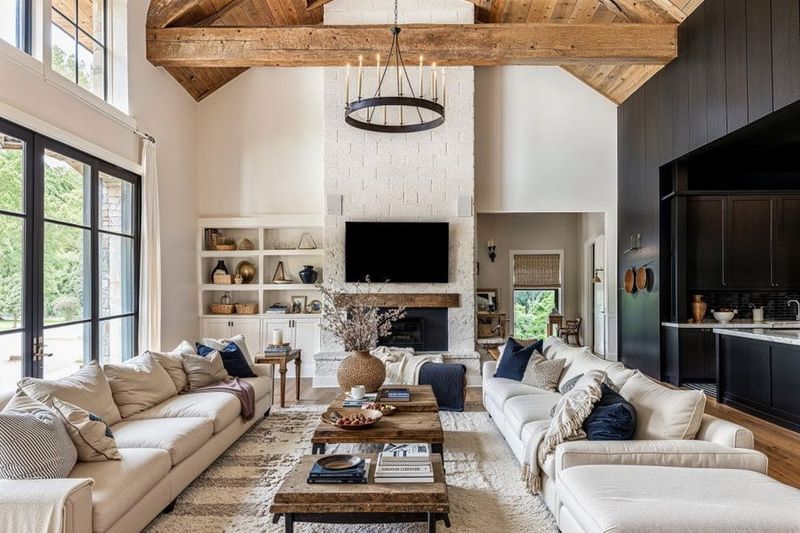
Combining cozy country charm with modern simplicity, this style features white board-and-batten exteriors with black window frames and metal roof accents. Inside, shiplap walls meet exposed beams and wide plank floors.
Apron sinks and vintage-inspired lighting add character without feeling dated. The look balances rustic elements with clean lines for a fresh take on country living.
Farm tables often serve as gathering spots in open-concept kitchen-dining areas, perfect for family meals or working from home.
13. Industrial Loft Style
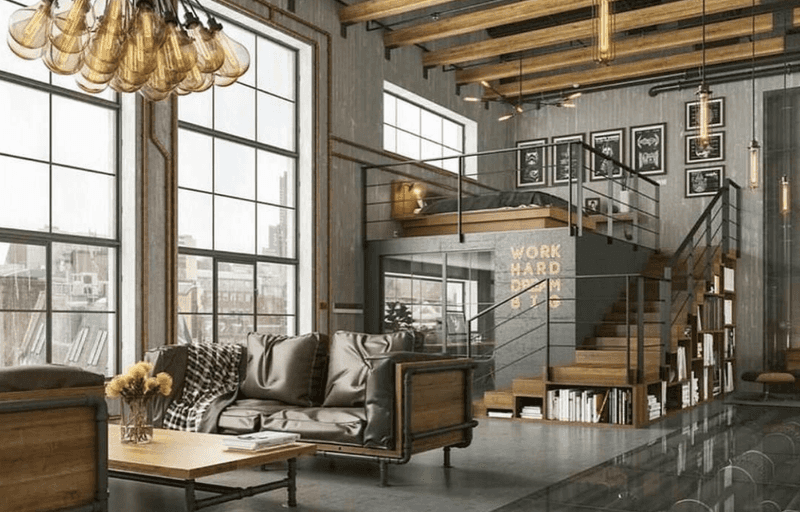
Factory chic meets home comfort in this urban-inspired look. Exposed brick walls, ductwork, and pipes celebrate rather than hide structural elements. Metal and wood combine in furniture pieces with minimal ornamentation.
High ceilings and open floor plans create dramatic living spaces perfect for entertaining. Concrete floors softened with area rugs offer durability with warmth.
Large factory-style windows flood spaces with natural light, while Edison bulbs and cage lighting fixtures add vintage industrial flair to evening ambiance.
14. Scandinavian Simplicity
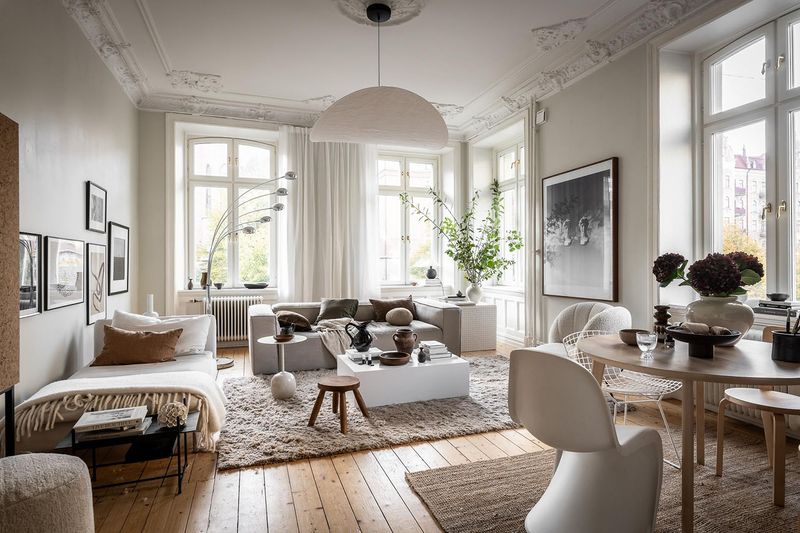
Less truly is more in these light-filled, minimalist spaces. White walls serve as blank canvases for carefully selected furniture pieces in pale woods like ash and birch.
Functionality drives design choices, with clean lines and clutter-free surfaces creating calm, peaceful environments. Textiles in subtle patterns add warmth without overwhelming the senses.
Though minimal, these spaces avoid feeling cold through the use of hygge elements – soft throws, candles, and natural materials that create inviting, cozy atmospheres despite the simplicity.
15. Bohemian Eclectic

Rules? What rules? This free-spirited style mixes patterns, textures, and colors with joyful abandon. Vintage furniture pieces sit alongside globally-inspired textiles and handcrafted items.
Plants become key design elements, with hanging varieties and large floor specimens adding life and organic shapes. Gallery walls display collections of art, photographs, and mementos without concern for matching frames.
Low-slung furniture, floor pillows, and layered rugs create casual conversation areas perfect for gathering with friends for long, relaxed evenings.
16. Contemporary Minimalism
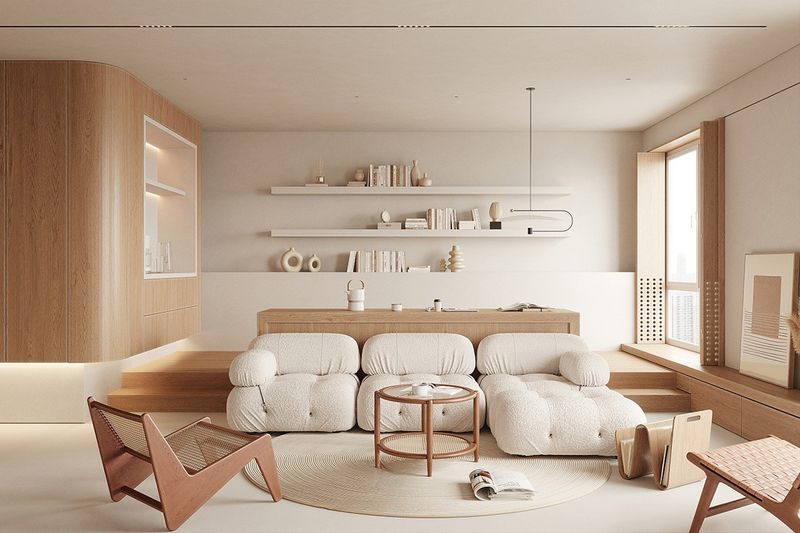
Form follows function in these sleek, uncluttered spaces where every item earns its place. Monochromatic color schemes with occasional bold accents create visual harmony and rest for the eyes.
Hidden storage solutions eliminate visual noise, while carefully selected statement pieces serve as focal points. Materials like glass, polished concrete, and engineered wood create smooth, seamless surfaces.
Smart home technology integrates invisibly, allowing spaces to transform according to needs without disrupting the clean aesthetic.
17. Coastal Contemporary

Beach vibes meet modern design in this fresh take on seaside living. Forget the kitschy seashell decorations – these spaces use subtle blues, whites, and sandy neutrals to evoke oceanfront tranquility.
Natural light floods through unadorned windows, while weathered wood elements add texture without screaming “beach house.”
Performance fabrics stand up to sandy feet and wet swimsuits without sacrificing style. Open floor plans create easy indoor-outdoor flow, perfect for entertaining after a day by the water.
18. Japanese Zen
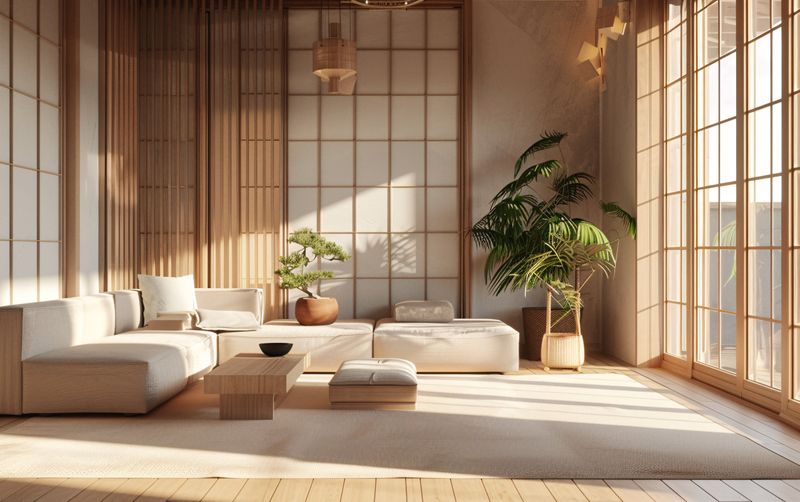
Tranquility reigns in these thoughtfully designed spaces inspired by Japanese minimalism. Natural materials like bamboo, rice paper, and unfinished woods create harmony with the environment.
Low-profile furniture arrangements promote groundedness, while carefully placed objects create asymmetrical balance. Empty space becomes as important as filled space, giving the eye places to rest.
Indoor-outdoor connections blur boundaries through sliding panels and courtyard gardens visible from multiple rooms, creating a sense of expanded space despite often modest square footage.
19. Transitional Elegance
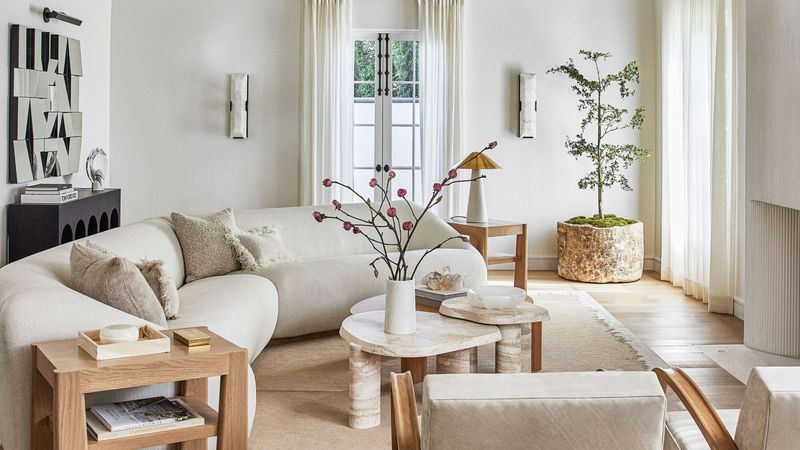
Not too traditional, not too modern – transitional style offers the perfect middle ground. Curved furniture pieces with clean lines blend classic forms with contemporary restraint.
Neutral color palettes let architectural details shine while providing versatile backgrounds for seasonal decor changes. Textural elements like nubby linens, smooth leathers, and polished woods create subtle visual interest.
Accessories are carefully edited – a few larger statement pieces rather than many small items – creating spaces that feel both sophisticated and livable.
20. Sustainable Modern

Green building goes gorgeous in these eco-friendly homes that don’t sacrifice style for sustainability. Reclaimed wood floors pair with countertops made from recycled materials, while energy-efficient appliances blend seamlessly with contemporary cabinetry.
Large windows positioned for optimal solar gain reduce electricity needs while connecting occupants to nature. Living walls and indoor herb gardens add beauty while improving air quality.
Water-saving fixtures look luxurious while conserving resources, proving that environmental responsibility can be beautiful.

